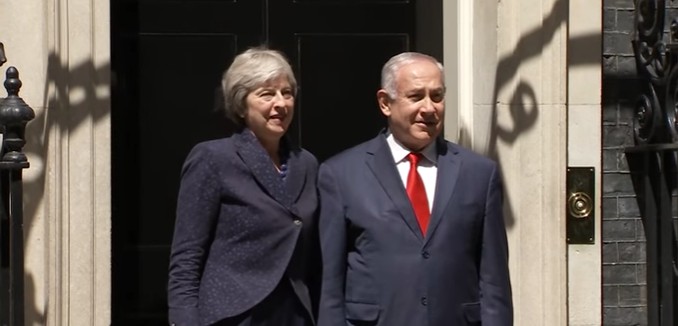When Israeli Prime Minister Benjamin Netanyahu tried to convince his European counterparts about the danger of the nuclear deal this past week, they were not receptive to his arguments. Yet the prime minister’s assessment of the deal three years ago, has been borne out by recent developments. Perhaps the leaders of Germany, France, and the United Kingdom need to reconsider their positions.
In his speech before Congress opposing the nuclear deal with Iran in March 2015, four months before the deal was agreed to, Netanyahu warned that the deal being discussed allowed Iran two major concessions that would allow Tehran different pathways to developing nuclear weapons.
The first concession, Netanyahu said, was that the terms of the deal, also known by the acronym JCPOA, leave “Iran with a vast nuclear infrastructure and relies on inspectors to prevent a breakout.” This means, the prime minister explained, that the deal presents “a real danger that Iran could get to the bomb by violating the deal.”
On the other hand, Netanyahu observed, the deal presents an “even greater danger that Iran could get to the bomb by keeping the deal.” Later he clarified that the deal “doesn’t block Iran’s path to the bomb; it paves Iran’s path to the bomb.”
Netanyahu’s last point was inadvertently confirmed by then-President Barack Obama a month later in an interview, when he acknowledged that at the later years of the deal, Iran’s breakout time — the time required to produce enough fissile material for a nuclear weapon — would be “near zero.” Although Obama tried to explain his comment, independent experts have confirmed that, given the deal’s provisions allowing Iran to develop more efficient centrifuges, Iran will be able to enrich uranium for a bomb much more quickly after the tenth year of the deal.
In the news this week, Iran publicized the existence a workshop at the Natanz enrichment facility that can produce more advanced centrifuges. While news of the workshop is not new, and the centrifuges don’t violate the 2015 nuclear deal, the announcement of the workshop shows that Iran is serious about increasing its capacity for uranium enrichment and reducing its breakout time even within the confines of the agreement.
The centrifuge workshop illustrates Netanyahu’s concern that the deal could allow Iran to develop nuclear weapons even if it abides by the deal.
But other news stories in recent weeks have pointed to the possibility that Iran has a nuclear weapons program, the full scope of which we don’t know, meaning that Iran is cheating now, or could cheat in the future.
The first of these developments was Netanyahu’s announcement at the end of April that Israeli agents had snuck into a Tehran warehouse and smuggled out thousands of files showing that Iran had a dormant nuclear weapons program. Despite Iranian denials that it ever sought a nuclear weapon, the files showed that the Islamic Republic had specific plans to “design, produce and test… five warheads, each with a 10 kiloton TNT yield, for integration on a missile.”
A few weeks after Netanyahu’s revelations, The New York Times reported that satellite images showed that Iran “is developing the technology for long-range missiles,” which had the range to “threaten Europe and potentially the United States.”
These revelations are important, as they were not discovered by the International Atomic Energy Agency, which is charged with monitoring the deal. Rather, the discovery of the extent of Iran’s nuclear research was the product of a daring Israeli intelligence operation, and the ballistic missile program was revealed due to leaked satellite photographs. Both revelations showed Iran’s work in both areas was a lot more advanced than previously thought.
The failure of the inspections to discover these elements of Iran’s nuclear weapons program is significant, because as American Enterprise Institute expert Michael Rubin recently explained, “There are three main components to a nuclear weapons program: enrichment, warhead design, and delivery. Iran had mastered the first before agreeing to the JCPOA, and the exposure of a secret Iranian nuclear archive showed that Iran’s warhead work was also well-advanced. Secretary of State John Kerry’s concession to Iran on ballistic missile work enabled Iran to continue to develop missiles capable of delivering nuclear missiles regardless of the JCPOA.”
Responding to Netanyahu’s criticisms of the deal, Germany Chancellor Angela Merkel said the deal ensures “more transparency” over Iran’s nuclear program; French President Emmanuel Macron said that “the accord needs to be preserved to ensure control of nuclear activity;” and British Prime Minister Theresa May said, “Along with France and Germany, the UK continues to believe [the JCPOA] is the best route to preventing Iran from getting a nuclear weapon.”
Despite the JCPOA’s failure to detect two parts of Iran’s nuclear weapons program, and the freedom it gives Iran to build up its enrichment capacity, European leaders continue to insist that the deal is the best way to control Iran’s nuclear ambitions. Clearly, they have not been paying attention.
[Photo: VOA News / YouTube ]




